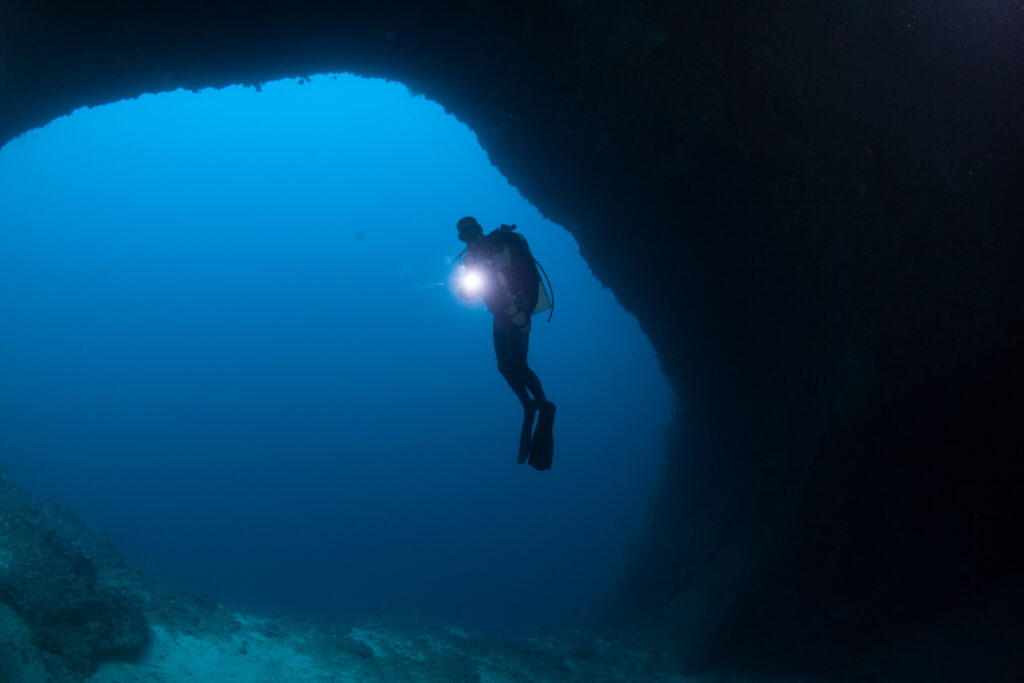What is a Dropoff?

A dropoff in scuba diving refers to a steep underwater slope or cliff that descends sharply from a relatively shallow area to much deeper waters. These underwater geological features are significant for divers due to their dramatic landscapes and the rich marine life they often host. Dropoffs are found in various parts of the world and are treasured for their breathtaking views and the unique diving experiences they offer. These areas are not only visually striking but also ecologically vital, serving as habitats for a wide variety of marine species.
What is a Pushing Tide?

A pushing tide, often referred to as a flood tide, is a natural oceanographic phenomenon where the incoming tide causes seawater to flow toward the shore. This type of tide plays a significant role in coastal environments and activities, particularly in scuba diving. Understanding pushing tides is crucial for divers as it affects both the safety and the overall experience of their underwater ventures. In essence, a pushing tide can significantly influence water conditions, marine life behavior, and the physical landscape of dive sites.
What is a Kelp Surface Dive?

A kelp surface dive involves swimming and exploring near the surface of the ocean where dense forests of kelp thrive. This activity is popular among divers and marine enthusiasts for its unique opportunity to observe a vibrant and ecologically significant environment. Kelp forests are found in coastal areas worldwide and are known for their towering, underwater canopies. These dives offer an unparalleled chance to witness marine life that thrives within these underwater forests while requiring less equipment and technical expertise than deeper dives. Kelp surface diving is both a recreational pursuit and a valuable method for scientists studying these critical ecosystems.
What is Visibility?

Visibility in scuba diving refers to how clearly a diver can see underwater. It is measured as the distance a diver can see horizontally in the water and is a critical factor influencing the overall diving experience. High visibility allows divers to appreciate the beauty of underwater ecosystems, navigate more efficiently, and maintain safety by clearly seeing their surroundings and fellow divers. Conversely, low visibility can obscure important visual cues, making navigation more challenging and potentially increasing the risk of disorientation or accidents. Understanding the factors that affect visibility, how it is measured, and its implications for marine life and diver safety is essential for anyone involved in scuba diving.
What is Slack Tide?

Slack tide is a critical concept in marine science and navigation, defined as the period when the water is completely unstressed between the ebb and flood of the tide. During this interval, the tidal current’s velocity is near zero, marking a brief moment of equilibrium in the ocean’s otherwise constant motion. For scuba divers, this phase offers a unique opportunity to experience the underwater world with minimal current interference, making it a favored time for diving activities. The significance of slack tide extends beyond recreational diving, impacting marine navigation and the behavior of various marine species.
What is a Dropping Tide?

A dropping tide, also known as an ebb tide, refers to the phase when the tide level is receding from high tide to low tide. This process is a crucial aspect of tidal cycles, driven by the gravitational forces of the moon and the sun, affecting the movement of water across coastal areas. Understanding the characteristics and effects of a dropping tide is essential for various maritime activities, particularly scuba diving, as it influences water conditions, marine life behavior, and underwater navigation.
